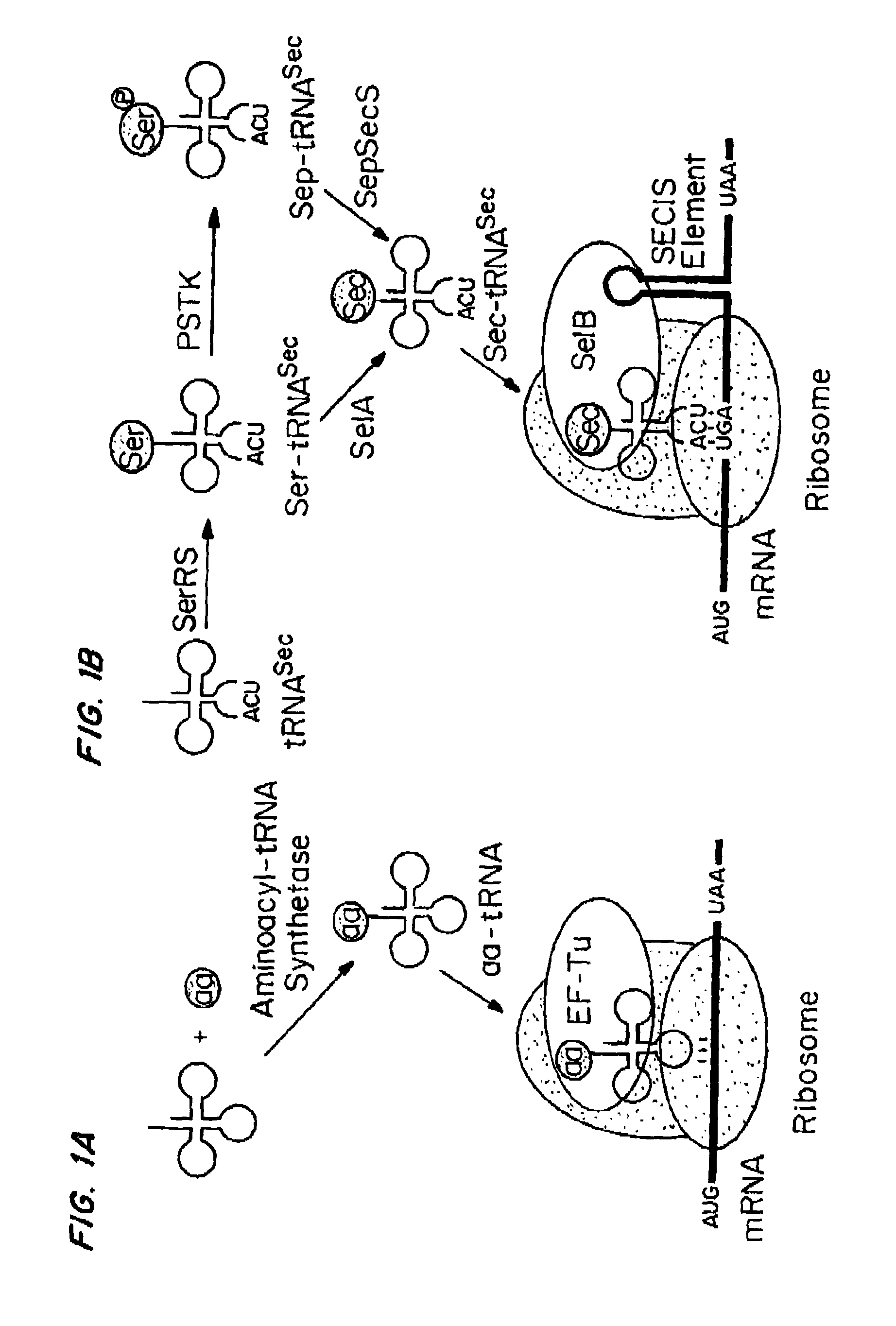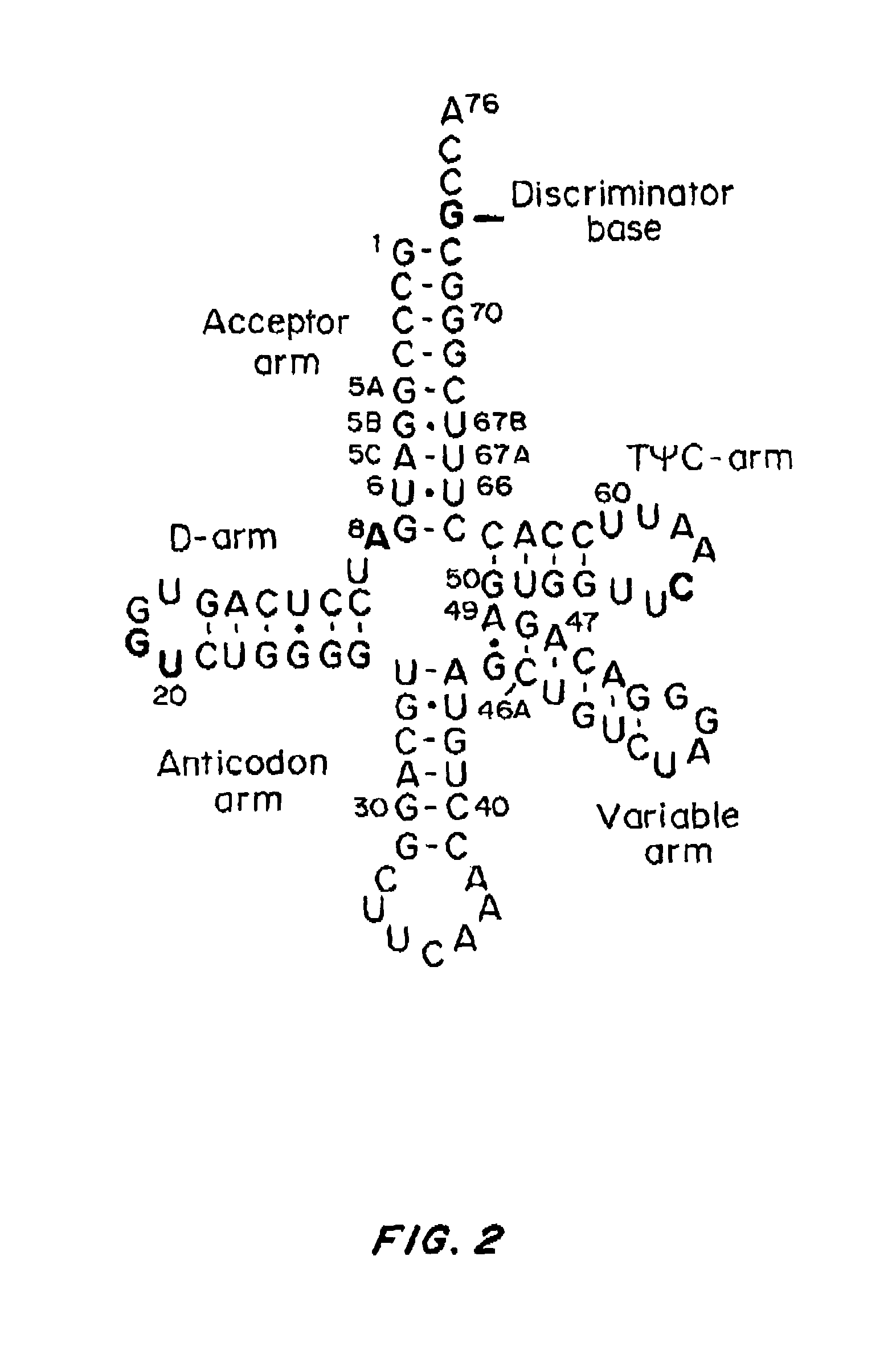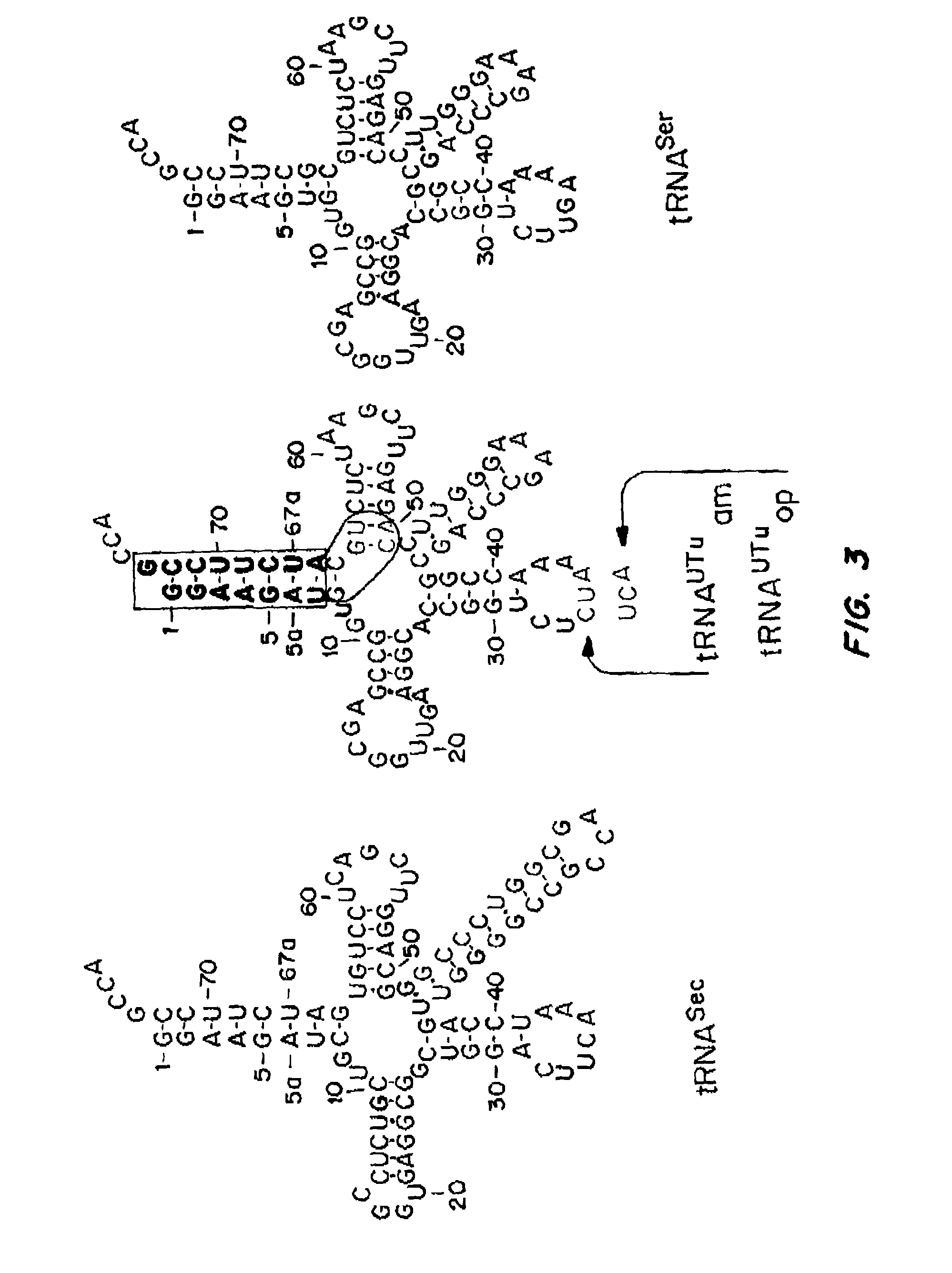Compositions and methods for making selenocysteine containing polypeptides
a technology of selenocysteine and polypeptides, which is applied in the direction of peptide sources, transferases, ligases, etc., can solve the problems of limited protein synthesis cost and efficiency, inability to accommodate sec proteins, etc., and achieves reduced dosage, increased activity, and reduced toxicity
- Summary
- Abstract
- Description
- Claims
- Application Information
AI Technical Summary
Benefits of technology
Problems solved by technology
Method used
Image
Examples
example 1
Construction of Exemplary Non-Naturally Occurring tRNASec
[0268]PSTK recognizes certain key bases (called identity elements) in the Sep-tRNASec substrate. These have been investigated by tRNA mutagenesis and subsequent transplantation of the tRNASec identity elements into a tRNASer body. The major M. maripaludis tRNASec identity elements G2-C71 and C3-G70 were transplanted into M. maripaludis tRNASer UGA.
[0269]Mutation of the tRNASer negative determinant A5-U68 to the C5-G68 base pair present in tRNASec resulted in a tRNASer variant that phosphorylated with a relative efficiency of 68% as compared to wild-type tRNASec.
[0270]Another mutant tRNA with an 8 bp acceptor stem (FIG. 4A) could be converted to Sep-tRNASec with 31% relative efficiency.
[0271]Thus, different variants of M. maripaludis tRNASer and tRNASec are properly recognized by PSTK.
[0272]Since E. coli is a system for Sec incorporation, tRNAUTu candidates derived from the E. coli tRNASer body were also designed (FIGS. 3 and ...
example 2
Ser-tRNAUTuam Forms Sec-tRNAUTuam
[0274]In vitro Ser-tRNAUTuam conversion was confirmed by TLC separation of [32P] Amp, [32P] Ser-Amp and [32P] Sec-Amp recovered by nuclease P1 treatment from [α32P] ATP radiolabeled tRNAUTuam, tRNAUTuam after serylation and Ser-tRNAUTuam after incubation in an in vitro Sec formation assay. The TLC was developed for 90 min under acidic conditions using 100 mM ammonium acetate and 5% acetic acid.
example 3
tRNAUTu Forms the Active Selenoenzyme Formate Dehydrogenase H
[0275]Formate Dehydrogenase H (FDHH) is a selenocysteine containing E. coli enzyme of known structure (Boyington, et al., Science, 275:1305-08 (1997)). A sequence encoding wildtype FDHH (FDHHop) or an FDHH (FDHHam) engineered to replace the opal codon with an amber codon was expressed in E. coli strain MH5 (BW25113 selA selB fdhF).
[0276]As shown in FIG. 5, tRNAUTu mediates functional Sec suppression in FDHH E. coli strain MH5 which was complemented with E. coli SelA, M. jannaschil PSTK, and either tRNAUTuop and FDHH op (1) or tRNAUTuam and FDHH am (4) and grown anaerobically on LB selective medium supplemented with 0.01 mM IPTG at 30° C. for 24 h. Controls used the same experimental setup with either tRNAUTuop (2) or tRNAUTuam (3) omitted and tested the combinations of FDHH op and FDHH am with genomically encoded E. coli tRNASec and plasmid encoded selB instead. Cells were overlaid with a top agar containing sodium formate...
PUM
| Property | Measurement | Unit |
|---|---|---|
| pH | aaaaa | aaaaa |
| droplet size | aaaaa | aaaaa |
| relative molecular weight | aaaaa | aaaaa |
Abstract
Description
Claims
Application Information
 Login to View More
Login to View More - R&D
- Intellectual Property
- Life Sciences
- Materials
- Tech Scout
- Unparalleled Data Quality
- Higher Quality Content
- 60% Fewer Hallucinations
Browse by: Latest US Patents, China's latest patents, Technical Efficacy Thesaurus, Application Domain, Technology Topic, Popular Technical Reports.
© 2025 PatSnap. All rights reserved.Legal|Privacy policy|Modern Slavery Act Transparency Statement|Sitemap|About US| Contact US: help@patsnap.com



